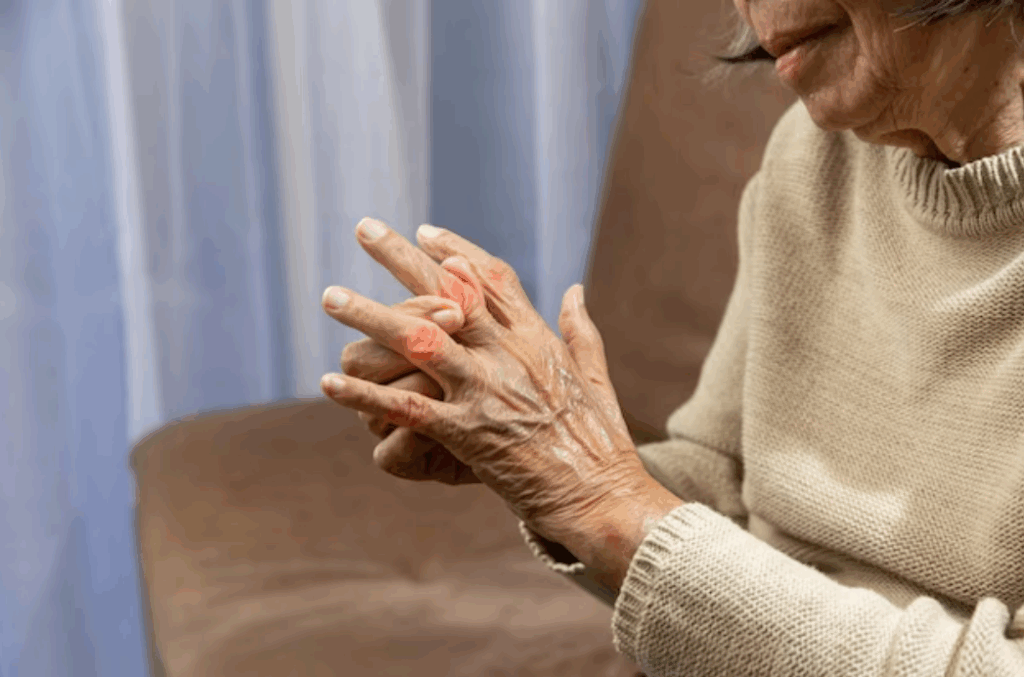If you're struggling with chronic migraines, you might be looking for effective, natural ways to find relief. Implementing simple strategies like maintaining a consistent sleep schedule and exploring dietary changes can make a significant difference. Staying hydrated and incorporating relaxation techniques may also help ease your symptoms. But that's just the beginning; there are additional methods worth considering that could further enhance your well-being. Curious about the other ways you can take control of your migraines? Let's explore some practical options that could lead to lasting relief.
Maintain a Consistent Sleep Schedule
Establishing a consistent sleep schedule can greatly reduce the frequency and intensity of chronic migraines. When you go to bed and wake up at the same time every day, your body learns to regulate its internal clock. This regulation can help prevent sleep disturbances that often trigger migraines. Aim for a regular sleep routine, even on weekends.
While it might be tempting to catch up on sleep, varying your sleep times can disrupt your circadian rhythm, leading to headaches.
You should also focus on creating a bedtime environment that promotes quality sleep. Dimming the lights an hour before bed, reducing screen time, and keeping your bedroom cool can signal to your body that it's time to wind down.
Make your sleeping space comfortable and free from distractions to enhance your sleep quality.
Pay attention to how much sleep you need to feel rested. Most adults require between seven to nine hours of sleep per night. If you're finding it hard to achieve this, consider adjusting your bedtime or wake time to guarantee you're getting enough rest.
It's also essential to listen to your body. If you feel tired during the day, consider taking brief naps, but avoid long ones that could interfere with your nighttime sleep.
Incorporate Relaxation Techniques
Incorporating relaxation techniques into your routine can make a significant difference in managing chronic migraines.
Practices like mindfulness meditation, deep breathing exercises, and progressive muscle relaxation help reduce stress and tension.
Mindfulness Meditation Practices
Mindfulness meditation practices can be a powerful ally in managing chronic migraine relief, especially when combined with relaxation techniques. By focusing your attention on the present moment, you can reduce stress and tension, which are common migraine triggers.
Start by finding a quiet space where you won't be disturbed. Sit comfortably, close your eyes, and take a few deep breaths.
As you settle into your practice, shift your focus to your thoughts and sensations. Observe your body and mind without judgment. If you feel discomfort or pain, acknowledge it, but try not to dwell on it. Instead, gently guide your thoughts back to your breath. This simple act can create a sense of calm and help you detach from the stress that often accompanies migraines.
Incorporating visualization techniques can enhance your mindfulness practice. Picture a serene place or imagine your pain melting away. Doing this regularly can help train your mind to respond more positively to migraine onset.
Deep Breathing Exercises
Breathing deeply can transform your experience of chronic migraines, offering a simple yet effective way to promote relaxation. When you focus on your breath, you engage your body's natural relaxation response, helping to ease tension and stress that can trigger migraines.
Start by finding a quiet space where you can sit or lie down comfortably. Close your eyes and take a deep breath in through your nose, allowing your abdomen to expand fully. Hold that breath for a moment, then exhale slowly through your mouth. Feel the tension leaving your body with each breath out.
Aim for a rhythm—try inhaling for a count of four, holding for a count of four, and exhaling for a count of six.
Repeat this process for several minutes, and notice how your body begins to relax. Incorporating deep breathing exercises into your daily routine can help you manage stress and reduce the frequency of your migraines.
Progressive Muscle Relaxation
Amid the challenges of chronic migraines, Progressive Muscle Relaxation (PMR) offers a powerful way to release tension and promote overall well-being. This technique involves systematically tensing and relaxing different muscle groups, helping you become more aware of physical sensations and stress levels. By focusing on muscle tension, you can create a profound sense of relaxation throughout your body.
To practice PMR, find a quiet space where you won't be disturbed. Start with your feet; tense the muscles for a few seconds, then release and feel the difference. Gradually move up your body—your calves, thighs, abdomen, arms, and face—tensing each group before releasing. Pay close attention to how relaxation feels compared to tension.
Incorporating PMR into your daily routine can considerably lower stress and help prevent migraine triggers. You might find that just a few minutes of this practice not only alleviates immediate discomfort but also enhances your overall resilience to stress.
As you grow accustomed to recognizing tension in your body, you'll develop the skills to manage stress more effectively, creating a calmer environment conducive to migraine relief.
Stay Hydrated
Staying hydrated is essential for managing chronic migraines.
When you don't drink enough water, you might experience signs of dehydration, which can trigger or worsen your headaches.
Let's explore how proper water intake can make a difference in your migraine relief strategy.
Importance of Water Intake
Hydration plays an essential role in managing chronic migraines. When you're well-hydrated, your body functions at its best, which can greatly reduce the frequency and severity of your migraine attacks. Water helps maintain proper blood flow and keeps your brain tissues and cells healthy. If you're not drinking enough, you may inadvertently trigger a migraine episode.
It's imperative to incorporate water into your daily routine. Aim for at least eight 8-ounce glasses, but remember that your needs can vary based on activity level, climate, and individual health. Carry a water bottle with you throughout the day to make it easier to stay on track.
You can also boost your hydration by consuming water-rich foods like fruits and vegetables. Items like cucumbers, watermelon, and oranges not only enhance your hydration levels but also provide essential nutrients that can support overall health.
If you notice that your migraines seem to worsen during times of heat or increased activity, pay extra attention to your water intake.
Signs of Dehydration
Have you ever wondered how to tell if your body is running low on fluids? Recognizing the signs of dehydration is essential, especially if you suffer from chronic migraines. One of the first signs you might notice is thirst. If you feel thirsty, it's your body's way of signaling that it needs more water.
Additionally, pay attention to your urine color; dark yellow urine often indicates dehydration, while pale yellow suggests you're adequately hydrated.
You may also experience fatigue or dizziness, which can exacerbate migraine symptoms. Another common sign is dry skin or lips, indicating that your body is lacking moisture. If you find yourself feeling unusually hungry, it could be a signal that your body is craving water instead of food.
Headaches are also a red flag; dehydration can trigger or intensify migraine attacks.
To combat these symptoms, make it a habit to drink water throughout the day, even if you don't feel thirsty. Keeping a water bottle handy can remind you to stay hydrated and help minimize the risk of dehydration-related migraines.
Taking these steps can make a significant difference in your overall well-being.
Explore Dietary Changes
While managing chronic migraines can feel overwhelming, exploring dietary changes may provide significant relief. You might be surprised at how your diet impacts your migraine frequency and intensity. Start by keeping a food diary to identify potential triggers. Common culprits include aged cheeses, processed meats, and foods containing MSG or artificial sweeteners.
Once you pinpoint these triggers, try eliminating them from your diet to see if your symptoms improve.
Incorporating certain foods can also be beneficial. Aim to eat a balanced diet rich in whole foods, including fruits, vegetables, whole grains, and lean proteins. Foods high in magnesium, such as leafy greens, nuts, and seeds, may help reduce migraine occurrences. Omega-3 fatty acids, found in fatty fish like salmon, can also be anti-inflammatory and potentially ease migraine symptoms.
Don't forget about hydration! Dehydration is a common trigger, so make sure you're drinking enough water throughout the day. Some people find that caffeine can either trigger or alleviate migraines, depending on their individual response, so it's worth experimenting with your caffeine intake.
Lastly, regular meal times can help stabilize your blood sugar levels, which is vital for migraine management. Skipping meals can lead to spikes and drops in blood sugar, potentially triggering a migraine.
Utilize Essential Oils
Consider incorporating essential oils into your migraine relief toolkit. These natural remedies can provide soothing effects and may help alleviate the intensity and frequency of your migraines. Lavender, peppermint, and eucalyptus oils are particularly popular for their therapeutic properties.
Lavender essential oil is known for its calming effects. You can inhale its scent directly from the bottle or dilute it with a carrier oil and apply it to your temples. This can help ease tension and promote relaxation, making it a great choice during a migraine episode.
Peppermint oil is another powerful option. Its cooling sensation can relieve headache symptoms. Try applying diluted peppermint oil to your forehead and temples. You might also find that inhaling its aroma can be invigorating and energizing, which can help redirect your focus away from the pain.
Eucalyptus oil can help clear your sinuses and may alleviate pressure associated with migraines. Inhale the scent or use it in a steam inhalation by adding a few drops to hot water. This can provide immediate relief and help you breathe more easily.
When using essential oils, always perform a patch test to avoid any allergic reactions. Remember to consult with a healthcare professional before introducing any new treatments into your routine, especially if you have underlying health conditions or are pregnant.
Practice Regular Exercise
Incorporating regular exercise into your routine can greatly benefit those suffering from chronic migraines. Engaging in physical activity helps reduce the frequency and intensity of migraine attacks. It promotes better blood circulation, decreases stress levels, and improves your overall mood. These factors all contribute to fewer migraines, making exercise an essential part of your migraine management strategy.
Here are a few key benefits of regular exercise:
- Stress Reduction: Exercise releases endorphins, which act as natural painkillers and mood enhancers.
- Improved Sleep Quality: Regular physical activity can help you fall asleep faster and deepen your sleep, both of which can reduce migraine triggers.
- Enhanced Physical Fitness: Staying active strengthens your body, making it more resilient to migraine triggers.
To get started, find an activity you genuinely enjoy—whether it's walking, swimming, or yoga—and aim for at least 30 minutes a day, most days of the week.
Listen to your body and adjust the intensity as needed. Consistency is key, so try to make exercise a regular habit.
You might also consider incorporating stretching and relaxation techniques, as they can further help in reducing tension and stress.
Consider Acupuncture Therapy
If you're looking for alternative ways to manage chronic migraines, acupuncture therapy might be worth exploring. This ancient practice involves inserting thin needles into specific points on your body to stimulate energy flow and promote healing. Many individuals have reported a reduction in the frequency and intensity of their migraines after undergoing acupuncture.
During an acupuncture session, a trained practitioner will assess your individual needs and identify points that correspond to your symptoms. You may feel a slight prick when the needles are inserted, but most people find the process relaxing. The therapy is believed to release endorphins and improve blood circulation, which can help alleviate migraine pain.
Research supports acupuncture as a viable option for migraine relief. Studies have shown that patients who receive regular acupuncture treatments often experience fewer migraine days and a decrease in pain severity.
It's important to consult with a qualified acupuncturist who understands your specific condition to get the best results.
In addition to pain relief, acupuncture may also help address underlying issues contributing to your migraines, such as stress, tension, or hormonal imbalances.
Combining acupuncture with other natural remedies, like dietary changes and stress management techniques, can create a holistic approach to migraine relief.
Conclusion
By implementing these natural strategies, you can take control of your chronic migraines and improve your overall well-being. Stick to a consistent sleep schedule, practice relaxation techniques, and stay hydrated. Don't forget to explore dietary changes and incorporate essential oils into your routine. Regular exercise and acupuncture therapy can also make a difference. Keep track of your progress and triggers in a migraine diary, and you'll be better equipped to manage your symptoms effectively.



